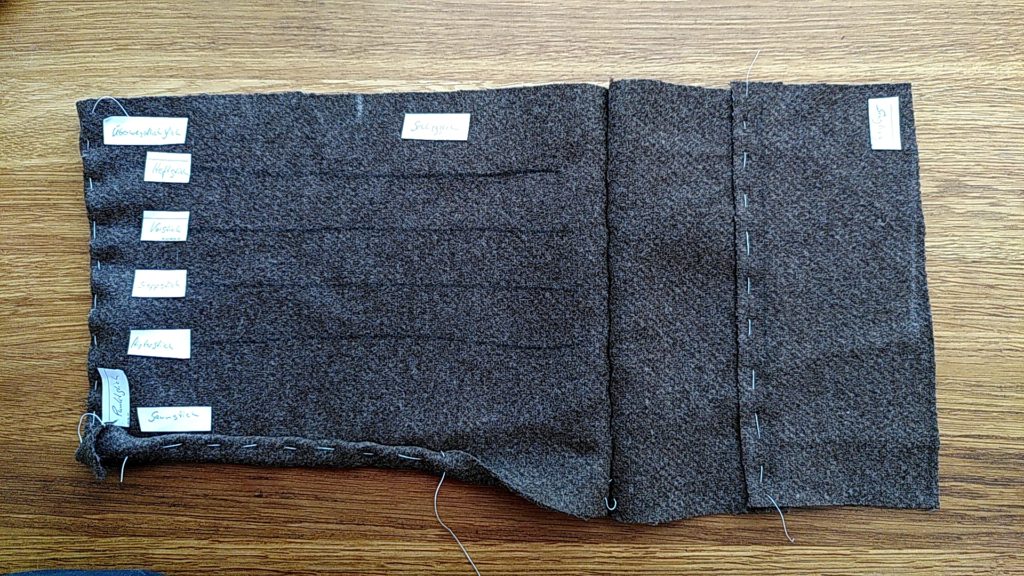I'm very much looking forward to Sunday - which is when I will do the first online version of my workshop about medieval seams and stitches. It is an intro workshop resulting in a nice little sampler cloth, showing the most usual stitches and some seam and hem variations. It can serve, later, as a help to decide which seam to use, or which kind of hem or neatening will work best.
In the previous courses, I always brought along a few write-on-cloth pens and some extra linen fabric or bands for labels with the stitch names. But since that is not an option for an online class, there's been an upgrade:

Properly woven, nice neat labels for the stitch types.
These were done in a German manufacture on band looms, and they are in organic cotton. If you are looking for labels for something - maybe "handmade by ..." or with your name woven in, or with whatever other text, I can absolutely recommend Bandetikettenweberei Max Windrath, with their absolutely fabulous customer service. (Some of my labels got lost in the post, and the replacement arrived here lightning-fast.)
In the previous courses, I always brought along a few write-on-cloth pens and some extra linen fabric or bands for labels with the stitch names. But since that is not an option for an online class, there's been an upgrade:

Properly woven, nice neat labels for the stitch types.
These were done in a German manufacture on band looms, and they are in organic cotton. If you are looking for labels for something - maybe "handmade by ..." or with your name woven in, or with whatever other text, I can absolutely recommend Bandetikettenweberei Max Windrath, with their absolutely fabulous customer service. (Some of my labels got lost in the post, and the replacement arrived here lightning-fast.)







